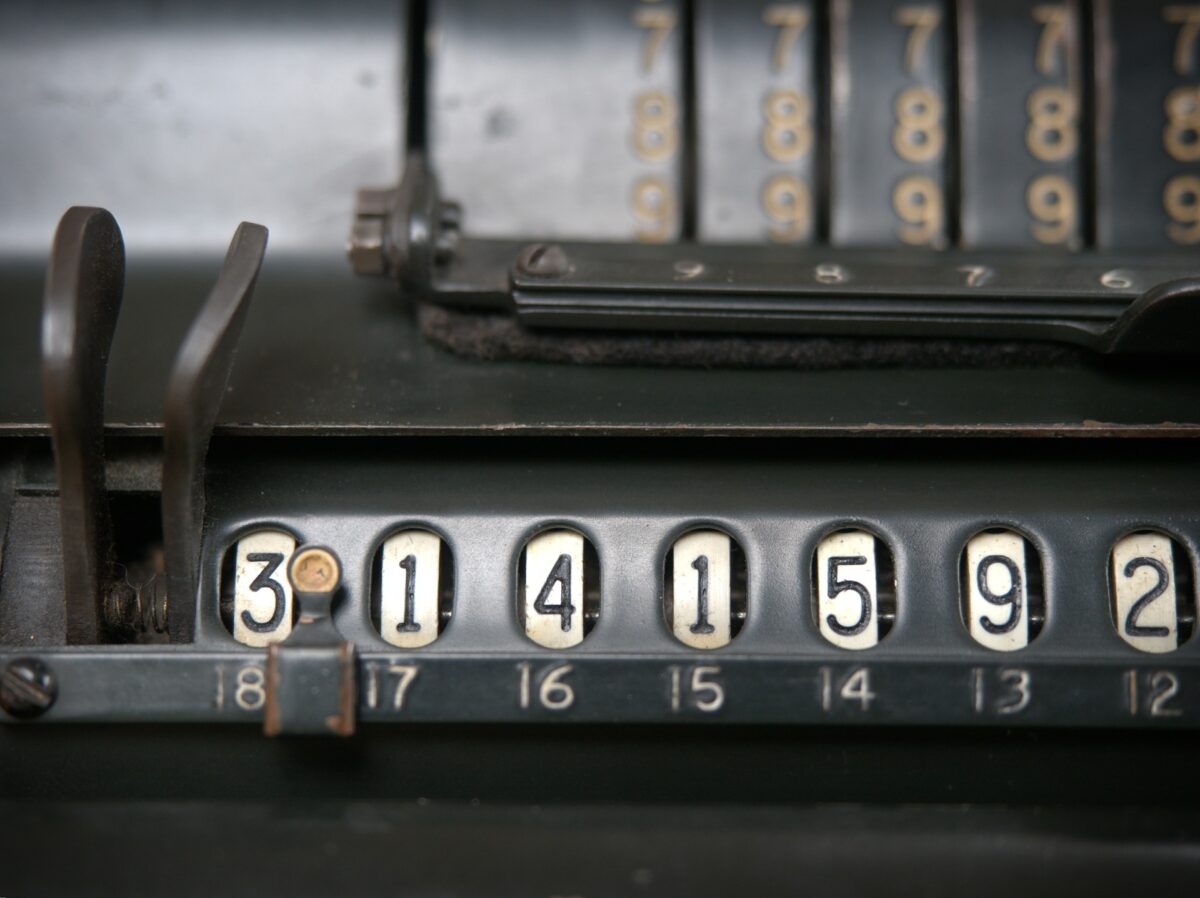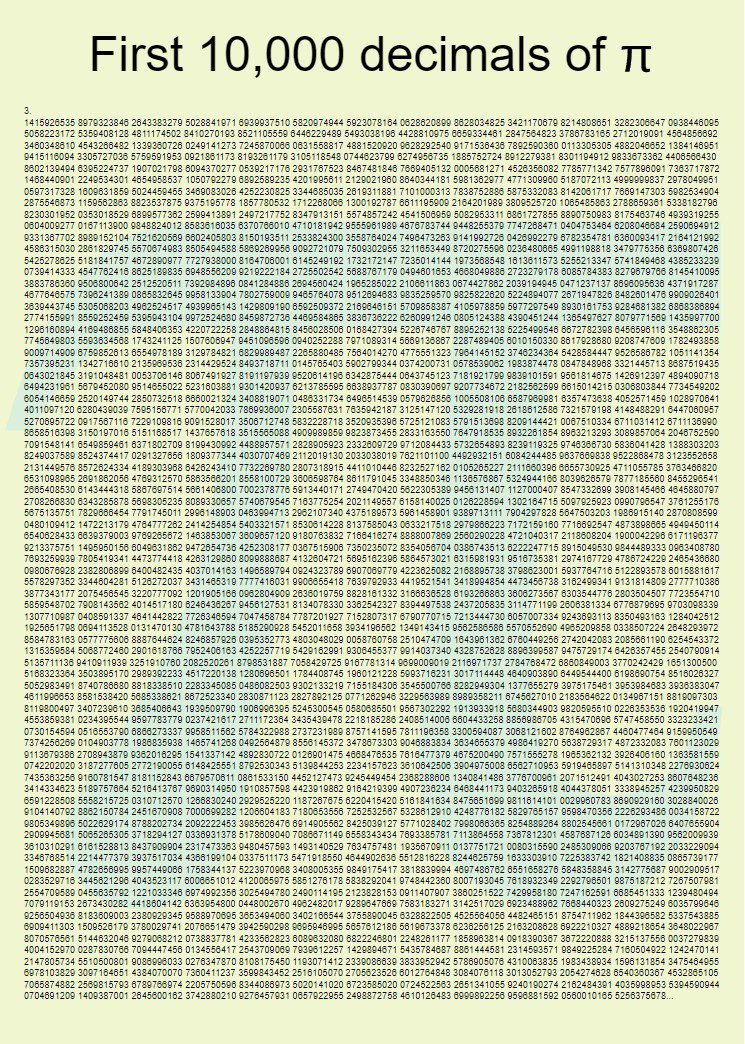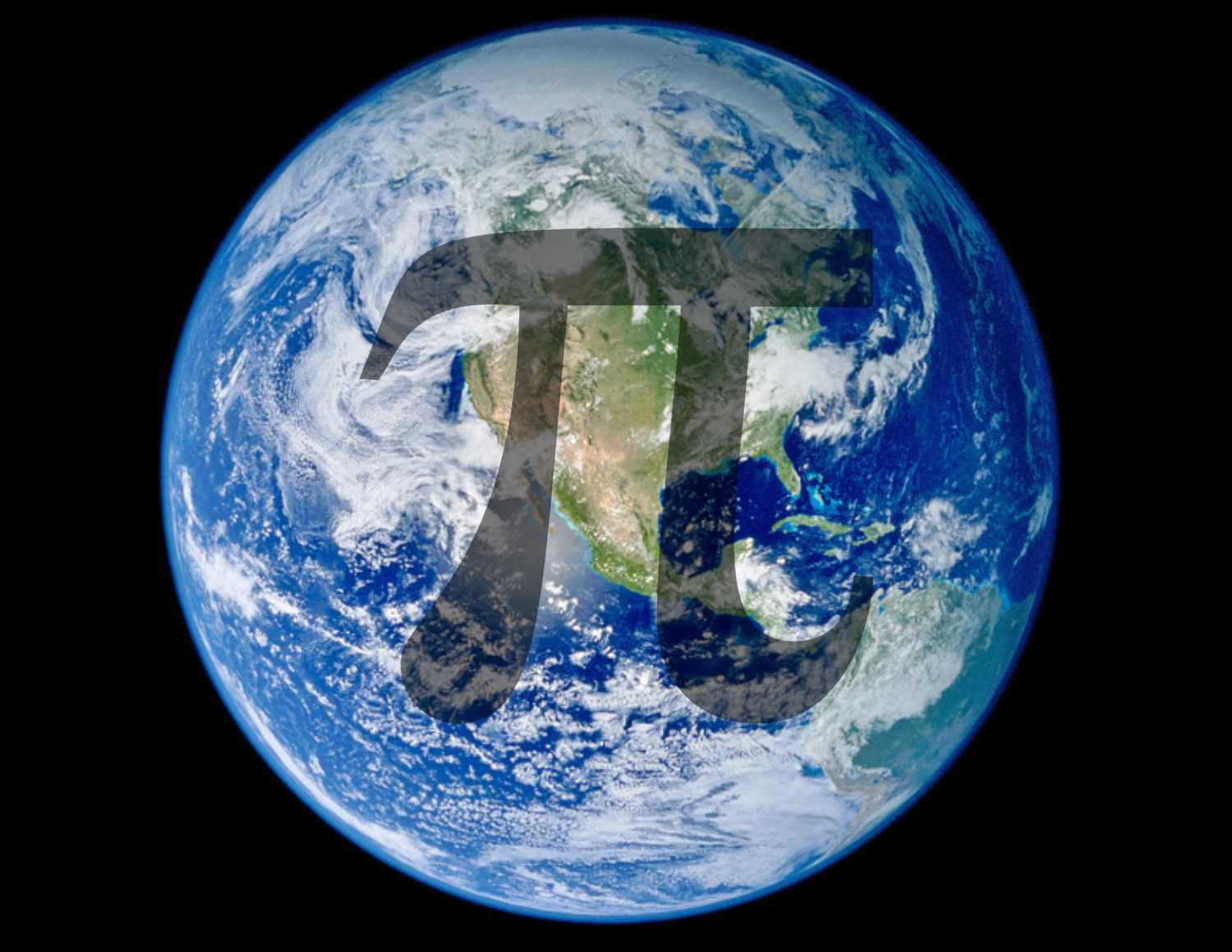First of all, why Phi? The mathematical symbol for Phi “π” is a Greek letter, derived from the first letter of the Greek words “περιφέρεια”, meaning periphery, and “περίμετρος”, meaning perimeter. The earliest known use of symbols was by the Welsh mathematician William Outright in 1647, but was only popularized in 1748 by Leonhard Euler in his Introduction to Infinite Analysis.
Mathematically, Phi is used to calculate the volume of a sphere or the circumference or area of a circle. So why all the fascination and curiosity towards Phi? First, we must trace the history of Phi and then we will discuss the discovery of the decimal place of Phi. We will see that Phi is an irrational number, a transcendent number, and possibly a normal number.
We will then end with some of the mysteries surrounding Phi. Even if you don’t like math, algebra, trigonometry, Gauss, Thales, Pythagoras and these kinds of theorems, I guarantee that you’ll find the odds somewhere in this article!
To become a real expert on Phi in math class and know everything there is to know about math, all you have to do is read!
What is Phi? And what is the history?
If today, the most powerful computers are capable of determining up to 13 trillion decimal places of Phi, you can imagine that this is not always the case.
If today, the most powerful computers are capable of determining up to 13 trillion decimal places of Phi, you can imagine that this is not always the case.
In the level of studying mathematics, it is not foreign to discuss Phi. We use it a lot but do you know what Phi is and what is its history?
Phi is the ratio of the circumference of a circle to its diameter. Phi is denoted by the lowercase Greek letter which is spelled as phi which comes from the first letter of the Greek word perimetros or the so-called circumference. The value of pi is the length of the circumference of a circle whose diameter is 1 unit. Based on the previous definition, the phi formula is derived from the definition of as the ratio of the circumference of a circle to its diameter d;
π = k / d
From this comparison, we finally get the formula for the circumference of a circle as k=πd. Approach for the value of phi itself, we can use =3.14 or =22/7 . The number is only an estimate used for approximation of the value of itself, but there is no exact number that shows the exact value.
History of the value of Phi
- Since antiquity, scholars and mathematicians have been fascinated by Phi and have tried long and hard to get values that are as representative as possible.
- 1680 BC: The oldest known value of Phi is the work of the Babylonians. They tried to compare the perimeter of a circle with that of a hexagon. The approximate value of Phi at that time was 3 + 1/8 = 3.125
- 1650 BC: The Rhind Mathematical Papyrus discovered in 1855 teaches us that the Egyptians also studied Phi and tried to find its closest approximation. The Egyptian scribe Ahmès observed that the area of a square of 8 units on one side could be reformed to almost produce a circle with a diameter of 9. Mathematically, this would mean (16/9) 2 or about 3.16.
- 700 BC: The Indian text Shatapatha Brahmin also gives an estimate of Phi equal to 25/8 (3,125). Indian mathematicians from the Vedic period again estimated Phi to be 3.1416 using astronomical calculations.
- Archimedes (-287 / -212) is widely considered to be the first person to calculate an accurate estimate of Phi in his essay on ‘Measurement of Circles’. Archimedes, using a very clever method, figured out how to estimate the perimeter for a polygon with twice as many sides. Using a polygon with 96 sides, Archimedes arrived at the following approximation: 220/71 < Pi < 22/7
Archimedes’ method was used for 2000 years after his death. Not bad, right?

Phi Value Relationship with Radians and Degrees
In measuring angles, we will recognize radians and degrees which are units of measure for angles. The value of phi in degrees is 180 degrees or for a full circle it is 2π.
Radian is the radius or radius. As we know, the circumference of a full circle is 2π radians or the equivalent of 360 degrees. For this reason, v radian represents a circle as far as 180̊ so that 1 radian is equal to 180/π or 1 radian is equal to 57,290 degrees.
Phi Value: The Process Towards Decimal Numbers
After proving his method, many mathematicians will use Archimedes’ method to determine the more digits of Phi.

- 5 decimal places: Liu Hui used a method to give an estimate of Phi to the nearest one hundred thousand (3rd Century).
- 6 decimal places: approximation determined to the nearest millionth (3.141592) by mathematician Tsu Chung Chih (5th century).
- 14 decimal places: still working from the discoveries of Archimedes, the Persian astronomer Jemshid al Kashi presents us with the first 14 decimal places of Phi (15th century).
Western countries did not start the race to estimate the value of Phi until several centuries later, although in the early 17th century Leonardo da Pisa Fibonacci proposed an interesting estimate of the value of Phi.
- From 20 to 32 decimal places: Based on Archimedes’ theory, German mathematician Ludolph Van Ceulen fixed the first 20 decimal places of Pi in 1596 using a polygon with 480 billion (60 * 233) sides, then the first 32 in 1615. He was pleased to know that the number Phi is called with the “Van Ceulen number”. A little confession!
The real turning point in the calculation of Phi was the discovery of analysis and differential calculus. Many mathematicians such as John Wallis, Leibniz, James Stirling and Newton understood that Phi could not only be understood geometrically, but could be in the form of a series.
- From 71 to 100 decimal places: thus Abraham Sharp got the correct 71 decimal places of Phi in 1699, the 100 decimal bar was then crossed in 1706 by John Machin with the help of the arctan function. From an interest in pure mathematics, Phi has become a challenge for all mathematicians, a clear sign of pride.
- Several thousand billion decimal places: today, the most advanced computers are able to provide several thousand billion digits after the decimal point, humans no longer feel burdened …
Humans have found another way to have fun with math and Phi: say as many decimal places as you can! There is even a group of individuals who can make a list from the first 1000 decimal places of Phi (1000-club).
Notable achievements include Daniel Tammet who in 2004 quoted 22,514 Phi decimal places in just 5 hours. The record is currently held by a Japanese native who can read 100,000 decimal places of Phi.

If you want to get started, it only takes sixteen and a half hours…! If you’re feeling bored or need a break from your usual lessons, why not see how far you and your math teacher can help you? If the value of Phi is uncertain, and therefore mysterious, do you know one of the greatest mysteries in mathematics?
Features- Phi Features
Let’s get back to the point of these two little letters, which will still reveal a lot of surprises! Not a very rational thing, right? Phi is an irrational number, which means it cannot be written as a fraction of two whole numbers (like a rational number). B
In fact, the decimal places are neither periodic nor finite. In other words, the decimal Phi is unpredictable and no model can predict it. The first Mathematicians discovered the principles of infinity and abstract infinity, they even saw Phi as an insult to God’s omniscience! A number of transcendents! Phi is a transcendental number, which means it cannot be a solution to polynomial equations with integral coefficients.
However, the formula that ties Phi to other mathematical constants such as the Golden Ratio, which corresponds exactly to the method of constructing the Fibonacci sequence.
Is Phi a normal number? The fact that researchers still don’t know whether Phi is a normal number (a number with a finite order of decimal places) has had a profound effect on our continued interest in Phi. In nearly four millennia, this figure still hasn’t revealed all its secrets!
Phi is everywhere! Oh yes! Phi is all around you! Phi’s omnipresence, outside of geometry classes, is of real interest to many researchers and mathematicians alike.
Phi is effectively a certain continuous fraction limit, nested radicalism. Research carried out on transcendental and irrational numbers, mostly related to Phi, provided the answer to the square of a circle.
It is actually impossible to construct a square with the same area as a given circle. In statistics and probability, the Phi number also appears, as in Buffon’s needle problem.
Interesting Facts about Phi
More interestingly, Phi is everywhere beyond the bounds of simple mathematics. Phi exists wherever the circle is, for example in a light bulb, sun, eye and DNA! Phi is even present in the equations of Heisenberg’s famous uncertainty principle, which seeks to evade our understanding of the universe. Pi-ramid from Cheops

What is the connection between Phi and the Egyptian pyramids? Pi also appears in mythical constructs, which have no clear connection to the circle. This is particularly the case with the famous Cheops pyramid case. A number of works show that Phi is the ratio between the perimeter of the base and twice the height of the pyramid.
This mathematical ratio for Cheops is almost the same as Phi (I’ll let you calculate the perimeter!). Was this intentional by the architects or just a coincidence? Math and literature! Finally, for those who categorically separate mathematics from literature, Phi reconciles the two subjects.
Poetry allows us to learn the first few decimal places of Phi (127 in the full poem), so why not amaze your friends! The idea is that the number of letters in each word corresponds to the decimal point Phi.
This short stanza has thirteen digits : Look, I have a very helpful rhyme 3 1 4 1 5 9 My weak brain ability, 2 6 5 Which sometimes refuses to do its job. 3 5 9 9 Why not study the whole poem!
In conclusion: Why obsessed with Phi?
- Because it’s historic! Phi has always been interesting because it has deceived mathematicians throughout history. All the greatest mathematicians have been fascinated by this symbol. This attraction is universal and has been around for almost 4000 years.
- More secrets to discover! It is a fact that Phi has not revealed all its secrets, it is a symbol that holds many mysteries, a symbol that transcends mathematics and is a very beautiful, if not the most beautiful embodiment.
- Live Math! Often viewed as a bleak science where imagination has no place, Phi restored mathematical prowess and dispelled this theory.
- Phi is really special! His extraordinary qualities and his presence in science as well as in everyday life give Phi a special place.
You have won against Phi! Be sure to pay tribute to one of the greatest mathematical discoveries on the next “Phi day”, every March 14th.

